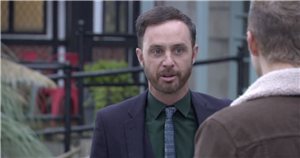With civil liberties in America under attack, those willing to fight to obtain them could learn a thing or two from the Patricio Guzmán documentary My Imaginary Country (Mi Pais Imaginario) about the Chilean protest of 2019. The people of Chile are fighting for the same things folks in the USA are. The only difference is that the Chilean people NEVER took their foot off the necks of their oppressors and successfully achieved their goal. Guzmán shows the duality of war, how it breeds anger and violence but also creativity, ingenuity, hope. He archives varying perspectives and allows the Chilean public to speak for themselves.
The protest were non-violent at first, but things escalated when President Pinera called a state of emergency and sent in military troops to disburse people in the street, and in response, protestors destroyed public property. These protests are considered Chile’s worst period of civil unrest since the end of Augusto Pinochet’s dictatorship. In October of 2019, over one million citizens hit the streets of Santiago to protest against financial and social inequality and demand President Piñera’s resignation. His cabinet is made up of elderly white men who are mostly related to each other which makes no room for young candidates or people of color. In November, Chile’s National Congress signed an agreement to hold a national referendum that would rewrite the constitution if it were to be approved. On 25 October 2020, Chileans voted 80 percent to make the change.
Related Story
How Ukrainian Filmmakers In Cannes Are Making Their Voices Heard: "We Have To Speak Loudly Through Cinema"
Guzmán narrates the film from his perspective, offering his point of view, and showcases interviews with government dissenters, including political analysts, scholars, activists, the homeless, and anyone currently impacted by the government’s oppressive policies. He also shows what these policies have done to public infrastructure. Society was at a point where it could not go on without an overhauling the government. They tried being “nice.” When that didn’t work, they made their frustrations known in ways that got the President’s attention.
The director gets right in the middle of the action between the people and the military and captures everything up close and personal. Most likely risking his safety to be in the thick of it. He also makes use of drones that capture establishing wide shots and sweeping camera pans of the capital, hovering above the action showing the carnage raging in the streets. Women dance in the street chanting, “It’s not my fault, it’s not the place, and it’s not my clothes,” protestors use pots, pans, rocks, and anything they can use to create sounds that resonate through the streets because they refuse to be ignored.
My Imaginary Country exists as a template for future generations and revolutions, not just in Chile but anywhere people on the margins feel unsupported and distrustful of their political leaders. The military tried to squash the rebellion with riot gear and tanks, but the people’s will rose above that. Millions were suffering and risked injury and death for equality and equity. The movie isn’t encouraging folks to be violent. Guzmán informs viewers that change is possible, but it must be on a united front.
Must Read Stories
‘SNL’ Starts Generational Shift With McKinnon, Bryant, Davidson & Mooney Exits; Watch Their Final Skits
Cannes Deal: Netflix Closes In On $50M+ WW Deal For Emily Blunt’s ‘Pain Hustlers’; David Yates Directing
Johnny Depp To Be Called As Witness For Amber Heard Defense In $50M Trial
Jeremy Renner, Malin Ackerman Films Get Deals; Latest Market News; Fest Reviews
Read More About:
Source: Read Full Article











